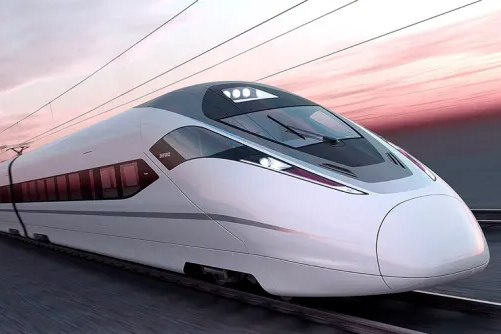High-speed rail (HSR) is becoming an increasingly controversial topic in the United States. Despite plans for HSR dating back to 1965, Democrats and Republicans still remain on opposing sides of this topic, making it difficult for any long-term resolutions to be passed in Congress. Democrats argue that HSR would bring a variety of important economic and environmental benefits to America, whereas Republicans argue that its high costs and the amount of time it would take to construct outweigh any possible benefits. With many modern-day media sources, influencers, and politicians taking strong sides on this topic, it becomes difficult for citizens to come up with a well-informed opinion, and the question remains: would HSR help or hinder our well-being as a nation?
As Cornell University defines it, high-speed rail is an “intercity passenger rail service that is… expected to reach speeds of at least 110 miles per hour.” While this may sound like a fantastic amenity to have in the U.S., there are a multitude of problems that outweigh any foreseeable benefits.
The first problem is the amount of time that it would take to construct a nationwide bullet train network. In California, the only U.S. state to begin construction of high-speed rail, initial funding was granted by voters in a 2008 referendum. But construction is only estimated to be completed by 2030, twenty-two years later.
This depicts just how much time it takes for only 500 miles of track to be built here in the United States (which is almost nothing compared to the tens of thousands of miles needed for a nationwide system). CATO’s O’Toole quantifies how long it would take to bring a nationwide HSR system to the U.S., writing that each railway would take at least two decades to be constructed.
Coupled with the ridiculously high prices (more than $3 trillion for a nationwide system) and cost overruns that HSR would bring, the creation of such a system would be a tremendous waste. By the time construction is complete, cheaper and more innovative forms of transportation — including the Hyperloop, electric aircrafts, and autonomous vehicles — will be available.
The second problem is human displacement. Starting a large-scale infrastructure project, like high-speed rail, would displace millions of people. As Farrell Evans from History writes (referring to the construction of the interstate highway system), “According to estimates from the U.S. Department of Transportation, more than 475,000 households and more than a million people were displaced nationwide.” A similar infrastructure project like high-speed rail is sure to do the same.
High-speed rail construction in California is not only disrupting communities, but primarily disrupting communities of color. Marc Joffe with the Reason Foundation explains that “In California, the high-speed rail route is disrupting and threatening the state’s communities of color. [It] forced the abandonment of the farm labor housing complex in Wasco, a city with a predominantly Latino and low-income population. Construction has also caused disruptions in Fresno, which has large Latino and low-income populations. If the system ever extends further, other communities would be impacted.”
The construction of high-speed rail across our nation would lead to the widespread displacement of citizens. Moreover, it shows that low-income communities and communities of color specifically would be harmed more. This is a significant issue that should be one of the primary focuses when considering this debate because widespread displacement leads to a variety of direct and indirect effects on families and subsequently communities. These effects include, but are not limited to: degradation of access to infrastructure, education, healthcare facilities, social opportunities, and security; the creation of food deserts; and major increases in poverty. All in all, this displacement would lead to a significant decrease in the well-being of already vulnerable communities.
Some would argue that HSR brings benefits like reduced greenhouse gas emissions. After all, it would provide a new form of clean energy public transit, which provides a faster and more convenient form of transport compared to cars. This would be a tremendous impact because reducing greenhouse gas emissions is a major benefit and even one of the UN’s Sustainable Development Goals. Despite this, these arguments fail to make up for the harms of high-speed rail. Firstly, although HSR doesn’t directly need fossil fuels, it ends up using fossil fuels for electricity, because the majority of America’s electricity (61%) comes from these sources. Moreover, because of the thousands of rail lines needed to be constructed for the system, there would be a tremendous quantity of emissions released into the atmosphere.
Another common argument is that high-speed rail would bring about economic growth due to the construction of millions of jobs, but this point can also easily be contested: firstly, as previously stated, HSR is mind-bogglingly expensive, so it would take a while for any economic benefits to appear. Secondly, there would be jobs lost in the automobile and airline industries. Moreover, many of the non-construction jobs that would be created from HSR construction are dependent on the completion of the railways — so it would take even longer for these economic benefits to occur.
High-speed rail is an obsolete technology that would be disastrous for the lives and livelihoods of people in the United States. The tremendous amount of time, money, and resources it takes to build, coupled with the displacement it would produce, outweigh the questionable benefits that its supporters continue to insist would transpire. 🆅
The opinions expressed within this piece are solely the author's and do not necessarily reflect the opinions and beliefs of North Mecklenburg High School.
